WMG News
NAIC shortlisted for AJ Architecture Awards
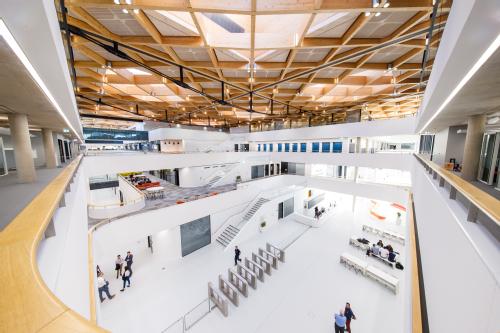
The National Automotive Innovation Centre (NAIC), situated in the Prof. Lord Bhattacharyya Building at the University of Warwick, has been shortlisted in the ‘Workplace’ category of the 2021 AJ Architecture Awards.
Recognising excellence in UK architecture, these highly coveted awards are unique to the market, with the winners published in a special edition of the Architects' Journal. The Workplace category is defined as ‘new-build refurbished architectural projects for workplaces completed between January 2019 and July 2021.’
To qualify for the category, the workplace in question must exceed 10,000m², an entry requirement the Centre comfortably eclipses with its 33,000m² of space for engineers, designers and academics to enjoy.
The Centre was officially opened in February 2020 by HRH The Prince of Wales. A partnership between WMG, University of Warwick, Jaguar Land Rover and Tata Motors, the Centre is the largest of its kind in Europe. Its unveiling was well-timed too, arriving during a global mobility revolution, a new age for transport mobility.
The Centre is driving the future of the automotive industry from the heart of the United Kingdom. A beacon for automotive research, it brings together the brightest minds from industry and academia, to develop future vehicles and mobility solutions.
Designed by Cullinan Studios, the brief for the Centre was for simplicity and strength of purpose, turning a complex assembly of spaces into an immediately legible building.
The AJ Architecture Awards winners will be revealed during a celebratory event on 17 November 2021 at the Grosvenor House, London.
UK-based consortium established to develop prototype solid-state batteries
MOU signed between Johnson Matthey, Faraday Institution, Britishvolt, Oxford University, UK Battery Industrialisation Centre, Emerson & Renwick and University of Warwick
HARWELL, UK (19 August 2021) A consortium of seven UK-based organisations has signed a memorandum of understanding to combine ambitions to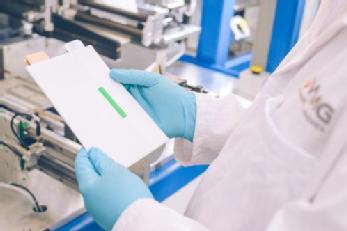 develop world-leading prototype solid-state battery technology, targeting automotive applications.
develop world-leading prototype solid-state battery technology, targeting automotive applications.
Solid-state batteries offer significant potential advantages over conventional lithium-ion batteries and could be transformational in meeting the UK’s net zero commitments through the electrification of transport. The successful outcome of the collaboration would be to harness and industrialise UK academic capability to produce cells using highly scalable manufacturing techniques that leapfrog the cost-effectiveness and performance achieved elsewhere.
The consortium comprises the following world-leading organisations in battery research, development and manufacturing:
· Faraday Institution – the UK’s independent institute for electrochemical energy storage research, which has led the consortium’s formation and will lead its development.
· Britishvolt – the UK-based Gigaplant developer, with a site in NE England.
· E+R (Emerson & Renwick) – a world leading designer of manufacturing equipment.
· Johnson Matthey – a global leader in sustainable technologies and the UK’s leading battery materials business.
· Oxford University – that leads the Faraday Institution’s solid-state battery project (SOLBAT) and provides the necessary scientific understanding to the consortium.
· UK Battery Industrialisation Centre – the pioneering battery manufacturing development facility to enable UK battery manufacturing scale-up and facilitate upskilling in the battery sector.
· WMG, University of Warwick – leaders in battery R&D and initial scale-up capability, as well as academic and apprenticeship skills development.
The preliminary design for a prototyping facility has been developed. Sources of funding are currently being sought.
Minister for Investment Lord Grimstone said: “Collaboration between industry, government and our world-leading academic institutions is putting the UK at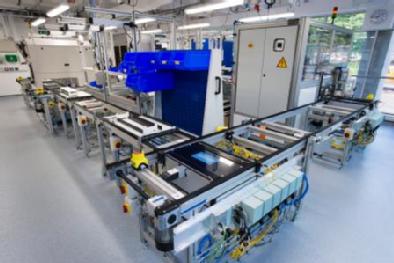 the forefront of global efforts to develop innovative automotive technologies, such as solid-state batteries.
the forefront of global efforts to develop innovative automotive technologies, such as solid-state batteries.
“It is the work of our internationally-renowned research and development base, like those brought together by this consortium, that will give us the tools needed to forge a strong and sustainable future for the automotive sector and increase our contribution to combatting climate change.”
“I am delighted to be able to announce the formation of this unique consortium for the advancement of solid-state battery prototyping that includes leading UK-based organisations at many stages in the value chain,” said Professor Pam Thomas, CEO of Faraday Institution. “Our leadership in this venture signals a move towards a role that the Faraday Institution will increasingly play as a trusted convener of significant partnerships between UK industry and academia as a route to commercialise breakthrough science emerging from our research programmes to maximise UK economic value.”
Solid-state batteries (SSBs) offer significant potential advantages over existing lithium-ion battery technologies, including the ability to hold more charge for a given volume (leading to increased electric vehicle (EV) range) and reduced costs of safety-management. Early deployment of SSBs is likely to be in consumer electronics, niche automotive applications and unmanned aerospace, before being used in broader EV markets. The Faraday Institution forecasts that, in 2030, SSBs are likely to take a 7% share of the global consumer electronics battery market and a 4% share of the EV battery market[1]. Global SSB revenues from sales to EV manufacturers are expected to reach $8 billion by 2030[2] and then grow rapidly to 2040 and 2050 when the market is expected to become extensive.
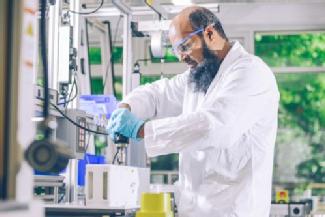 However, there are fundamental scientific challenges that need to be addressed before high power SSBs with commercially relevant performance can be realised. The Faraday Institution’s SOLBAT project has made considerable progress in addressing these challenges over the last three years.
However, there are fundamental scientific challenges that need to be addressed before high power SSBs with commercially relevant performance can be realised. The Faraday Institution’s SOLBAT project has made considerable progress in addressing these challenges over the last three years.
The construction of the one-of-a-kind facility being developed by the collaboration will enable SSB technology to emerge from UK university laboratories. It will allow larger cells to be produced using scalable manufacturing techniques that will be improved iteratively through deep investigation of the causes of problems that emerge during manufacture and testing of prototype batteries. This will leverage the collective knowledge of Faraday Institution SSB researchers and the industrial partners.
Christian Gunther, CEO, Battery Materials at Johnson Matthey comments, “The realisation of a prototype solid-state battery cell will be a great achievement for the UK battery industry, and this consortium will be a critical enabler for delivering this milestone. Delivering enhanced range and safety over traditional lithium-ion battery technologies will be a key driver for battery electric vehicle adoption, supporting the transition to a net zero future.”
Dr Allan Paterson, Chief Technology Officer, Britishvolt comments, “Solid-state is the holy grail of battery solutions. Solid-state batteries have the potential to increase energy density significantly over battery technology available today and could dramatically, and positively, change the world of electric vehicles. Britishvolt will be at the forefront of commercialising this step change over the coming years. This collaboration, which includes major global industrial leaders such as Johnson Matthey and academic leadership from University of Oxford, underscores another key objective in our technology roadmap – home grown intellectual property.”
Professor Peter Bruce, Principal Investigator of SOLBAT, comments: “It’s fantastic to see the culmination of combined UK academic strength in solid-state battery research come to fruition. I’m proud that the work of the Faraday Institution SOLBAT project, led by Oxford University, will make a significant contribution to the UK’s green energy revolution.”
Ian Whiting, Commercial Director at UKBIC added: “Our newly opened national battery manufacturing scale up facility is already contracted to scale new cells and battery packs by companies basing their manufacturing centres in the UK. It’s a really exciting time for this fast-growing industry. We’re scaling technologies that will be the core products of the UK’s emergent Gigafactories. But we need to think even further ahead and solid-state battery technology is going to be a big part of that. This collaboration is what is needed to give the UK the edge it needs in creating a centre of excellence for solid-state batteries and we’re excited to be part of it. The bringing together of academic and industrial know how in this space is key to unlocking Britain’s electrified potential.”
David Greenwood, Professor of Advanced Propulsion Systems, and CEO of WMG High Value Manufacturing Catapult comments: “Early forms of solid-state battery are already around us, but we have yet to see solutions which are both mass-manufacturable and meet the performance and cost targets for future transport applications. There remains huge opportunity for innovation in this space, and this initiative will provide the route for the UK to fast-track candidate technologies to industrialisation.”
Andrew C Jack, Sales Director, E&R Group comments, “E&R Group are delighted to be contributing our world renowned engineering expertise working in partnership Faraday and the wider consortium on this exciting development for next generation battery production for the UK.
For more information on the Faraday Institution, visit www.faraday.ac.uk and follow @FaradayInst on twitter.
WMG Master’s students present at prestigious service management conference
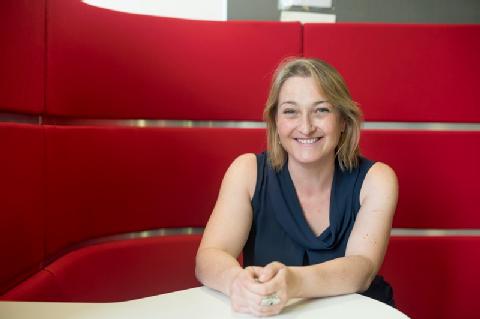 WMG Associate Professor, and MSc Service Management and Design Course Director, Mairi Macintyre and her students presented ‘COVID 19 - Lessons for the Service Professional’ at the prestigious international INFORMS Conference on Service Science (ICSS2021).
WMG Associate Professor, and MSc Service Management and Design Course Director, Mairi Macintyre and her students presented ‘COVID 19 - Lessons for the Service Professional’ at the prestigious international INFORMS Conference on Service Science (ICSS2021).
The research was based on insights taken from a series of special online seminars, at the height of the pandemic, hosted by Mairi. The series line-up included experts from a mix of sectors including aerospace, engineering, entertainment, energy, finance, travel and education. Companies represented included Rolls Royce UK, Innovate UK, Hong Kong Disneyland, National Grid, and many more.
The experts shared their insights and experiences of crisis management including their responses to the COVID19 pandemic, and predictions and challenges for the recovery period.
The students then analysed these insights to identify shifting priorities for the service professional, before presenting the findings at the Service Marketing stream at ICSS2021.
Mairi explained: “Congratulations to all researchers involved. To achieve publication at this prestigious conference is a real achievement. The students approached the tasks each week diligently, and with the commitment required to carry out first class research of publishable quality without the opportunity to ever meet in person. It is a fantastic accomplishment and one that we can all learn from.”
The students have also submitted their research to an international education conference taking place in Autumn 2021.
The students working in partnership with Mairi were S. Street; Y. Chen; H. Gao; H. Liu; R. Lu; J. Ma; Z. Meng; Y. Pan; L. Samuel; Y-H. Tsai; S. Wang; Y. Wei; W-K-E. Wong; X. Wu; X. Yang; Y. Yang; B. Zhan; X. Zhang and Y. Zhang.
Find out more about the MSc Service Management and Design (SMD) here: MSc Service Management and Design | University of Warwick
Three RIBA award wins for the Prof. Lord Bhattacharyya building
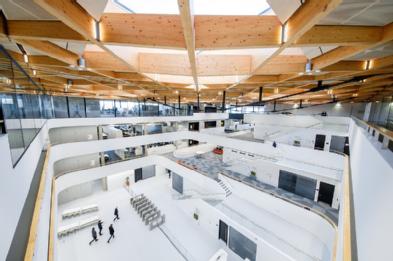 The Prof. Lord Bhattacharyya building, home to the National Automotive Innovation Centre, based at the University of Warwick, has received an impressive three awards at the RIBA West Midlands regional awards.
The Prof. Lord Bhattacharyya building, home to the National Automotive Innovation Centre, based at the University of Warwick, has received an impressive three awards at the RIBA West Midlands regional awards.
The building scooped top spot for Building of the Year, Client of the Year and the Regional Award, beating off stiff competition from across the West Midlands.
The RIBA awards champion and celebrate the best architecture in the UK and around the world, no matter the form, size or budget.
Executive Chair of WMG, Margot James comments: “I’m thrilled that the Prof. Lord Bhattacharyya Building has been recognised in this way, it is a great tribute to the late Professor Lord Bhattacharyya’s vision. Having a building that inspires designers, engineers and academics to develop the next generation of transport is excellent news for our partners and the region. The Midlands is the beating heart of automotive in the UK, and the National Automotive Innovation Centre, will be the driving force behind future innovation in transport mobility.”
James Breckon, Director of Estates, at the University of Warwick, comments: “It is great to see this new building being recognised and is testament to the wealth of architectural and engineering talent that was brought together to deliver this exemplary sustainable building. It brilliantly draws Industry and Academia together providing an inspirational environment to innovative within. As a landmark building it has transformed the campus at the University of Warwick and is a fitting legacy to the late Prof Lord Bhattacharyya.
The National Automotive Innovation Centre is a partnership between WMG, University of Warwick, Jaguar Land Rover, and Tata Motors, and is the largest of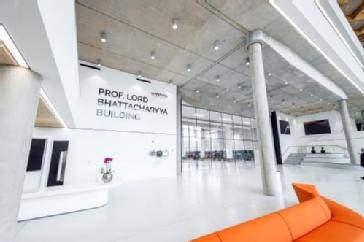 its kind in Europe and is well timed, arriving when a global mobility revolution is underway, with a new age for transport mobility.
its kind in Europe and is well timed, arriving when a global mobility revolution is underway, with a new age for transport mobility.
A beacon for automotive research it brings together the brightest minds from industry and academia, to develop future vehicles and mobility solutions. It is home to up to 1,000 staff working across design, engineering and research, as well as future engineers on degree programmes.
Designed by Cullinan Studios the brief for the Centre was for simplicity and strength of purpose, turning a complex assembly of spaces into an immediately legible building.
The National Automotive Innovation Centre is a £150m investment between WMG, Jaguar Land Rover, and Tata Motors with £29.5m funding from the UK government’s UK Research Partnership Investment Fund through Research England, which includes the development of an Advanced Propulsion Research Laboratory.
You can see all of the 2021 West Midlands RIBA award winners here: https://www.architecture.com/awards-and-competitions-landing-page/awards/riba-regional-awards/riba-west-midlands-award-winners
Bringing battery research to life at Our Future Moves
WMG is proud to play a part in the Our Future Moves exhibition at the Coventry Transport Museum.
The interactive exhibition tells the stories of the objects on display by envisioning how future cities may look and explores how pioneering developments in transport and technology could affect the environment and the way we live.
It features a range of exhibits that highlight the region’s pioneering work in transport innovation – from autonomous vehicles to one-person submarines.
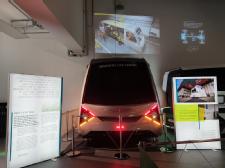 As well as showcasing the Coventry Very Light Rail Project, engineers from WMG’s Automation Systems Group have also created a display using a UR5 collaborative robot, or cobot, to show and explain how automation plays an important part in battery assembly and manufacturing.
As well as showcasing the Coventry Very Light Rail Project, engineers from WMG’s Automation Systems Group have also created a display using a UR5 collaborative robot, or cobot, to show and explain how automation plays an important part in battery assembly and manufacturing.
The cobot, which is the centrepiece of the display, was the brainchild of WMG Project Engineer Rohin Titmarsh. After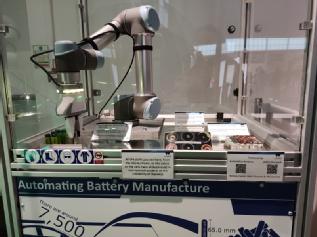 working on AMPLIFII , a research project which delivered novel and leading designs for high power and high energy modules, along with the manufacturing methods to deliver them to medium volume production, Rohin started to investigate ways to bring the project to life for a younger audience. The team collaborated with Schunk, suppliers of gripping systems for industrial robots, who have generously loaned a gripper to the team for use in this exhibition, highlighting WMG’s strength in industry and breath of partners we work with.
working on AMPLIFII , a research project which delivered novel and leading designs for high power and high energy modules, along with the manufacturing methods to deliver them to medium volume production, Rohin started to investigate ways to bring the project to life for a younger audience. The team collaborated with Schunk, suppliers of gripping systems for industrial robots, who have generously loaned a gripper to the team for use in this exhibition, highlighting WMG’s strength in industry and breath of partners we work with.
Rohin explains: “This project is a shining example of the fantastic ability we have between our research and technical teams, to help bring projects to life. I am very appreciative of the support of Engineering Technician, Bethany Haynes, and thankful to Phil Jemmett and Margaret Low in the Outreach Team for the opportunity and assistance to develop this extension of the ‘Battery Builder’ activity.
“It is always important to explain why automation is crucial in producing the number of batteries we need for the future. The ‘Battery Builder’ activity does that for school students by introducing robots in manufacturing, why we use them and some basics about programming them. The gamification of this activity means we’re communicating the key points about our research in a fun and engaging way. Being able to have a real cobot running in the museum is a fabulous example of modern day engineering and in turn a great way to inspire the next generation of young engineers
“We look forward to working with Schunk and other partners in the future on more exciting and innovative uses for cobots.”
Our Future Moves runs until 31st October 2021 - find out more here: Our Future Moves - Coventry Transport Museum (transport-museum.com)
Mayor opens Ramfoam’s new headquarters as company embraces digital thanks to WMG, University of Warwick
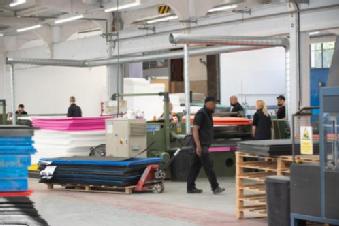
One of the first companies to sign up to a programme to improve the digital capabilities of smaller businesses has officially opened its new company headquarters and factory in Sandwell.
Andy Street, Mayor of the West Midlands and chair of the West Midlands Combined Authority (WMCA) cut the ribbon at Ramfoam’s new site on Haigne Road, Tividale which will see the business increase in size by 50 per cent.
Ramfoam, which makes foam products for the military and other organisations, was one of the first businesses to sign up to the West Midlands Made Smarter programme which is aimed at increasing the number of small and medium-sized enterprises (SMEs) adopting digital technology in manufacturing. Last year Ramfoam adapted its manufacturing practices to produce two million face visors a week at the height of the COVID-19 pandemic.
Made Smarter, which was officially launched in June, is headed up by the WMCA and the Department for Business, Energy and Industrial Strategy (BEIS).
Andy Street, the Mayor of the West Midlands said: “The West Midlands is a shining light for UK innovation, and that has become even more apparent throughout the pandemic.
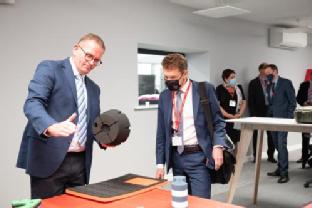 “That’s why, in partnership with BEIS, we set up the Made Smarter programme to help SMEs really make the most of our region’s digital capabilities.
“That’s why, in partnership with BEIS, we set up the Made Smarter programme to help SMEs really make the most of our region’s digital capabilities.
“It is therefore brilliant to see companies like Ramfoam not only taking part in the programme, but also the transformative effective it has had with their new expansion. The more companies that prosper like Ramfoam, the more jobs we’ll be able to create for local people.”
So far 85 companies have asked to join Made Smarter West Midlands and 58 have started the first stages of the programme. The year-long £1.9 million programme will see digital experts provide advice to businesses - like Ramfoam - on how to switch to advanced and automated technologies as well as working to improve employees’ overall digital skills.
Tim Mulqueen, Ramfoam’s sales director, said: “The Made Smarter programme is greatly assisting SMEs with their invaluable experience. Ramfoam is now actively working with Made Smarter to apply digital technologies to our business that will enable us to manufacture smarter and improve our efficiency, and in turn generate growth.
“I believe all West Midlands SME businesses could greatly benefit from support through Made Smarter; we all as SMEs need to challenge the way we do things in order to continuously improve and innovate.”
Ramfoam was helped by WMG at the University of Warwick to scale up production from 100,000 to two million face visors a week for the Government at the height of the pandemic.
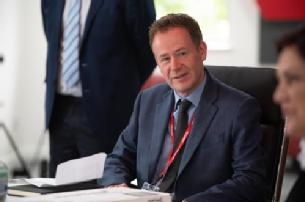 By creating a digital twin (a virtual model) Ramfoam was able to make 54 million visors over the last year. The company also signed up for WMG’s help to creating digital visualisation of its new factory, and now, as one of the first participants in Made Smarter West Midlands, will benefit from further assistance in adopting digital technology further.
By creating a digital twin (a virtual model) Ramfoam was able to make 54 million visors over the last year. The company also signed up for WMG’s help to creating digital visualisation of its new factory, and now, as one of the first participants in Made Smarter West Midlands, will benefit from further assistance in adopting digital technology further.
Dr Mark Swift, head of SME programmes at WMG, University of Warwick commented:
“The pandemic was a tough time for any business, and being able to flourish during it is certainly an achievement that Ramfoam has been able to do. We thoroughly enjoyed helping them drive up productivity and look forward to helping to transform Ramfoam further.
“It is incredibly exciting to see a West Midlands manufacturer doing so well, and we hope that more businesses will sign up to Made Smarter and continue to make the West Midlands a thriving manufacturing hub.”
The Coventry and Warwickshire Local Enterprise Partnership (CWLEP) Growth Hub is leading the one-year Made Smarter scheme with the region’s other Growth Hubs in Greater Birmingham and Solihull, the Black Country, Worcestershire, The Marches, and Stoke-on-Trent and Staffordshire on behalf of the WMCA and BEIS. The Growth Hubs are working closely with the WMCA and their strategic partners WMG, at the University of Warwick, and the Manufacturing Technology Centre (MTC) in Coventry.
Craig Humphrey, managing director of the CWLEP Growth Hub, said Ramfoam is a great example of a company best placed to take advantage of the Made Smarter scheme.
He said: “It’s fantastic that Ramfoam is one of the first firms to become part of the Made Smarter programme here in the West Midlands. It will help firms like Ramfoam develop innovative technology for the benefit of the region, as well as adopting new technology themselves to improve efficiency.
“Made Smarter will enable SMEs across the West Midlands receive the specialist support they need to embrace digital technology, and we are looking forward to more companies applying to Made Smarter and following in Ramfoam’s footsteps.”
Cllr Ian Brookfield, WMCA portfolio lead for economy and leader of City of Wolverhampton Council, said: “SMEs have felt the effects of the pandemic and have had to adapt to different ways of working as demonstrated by Ramfoam.
“Improved digital expertise gained through Made Smarter can help the region’s SMEs future-proof their practices, contributing to the economic prosperity of the region.”
To find out more about Made Smarter visit https://www.cwgrowthhub.co.uk/made-smarter-west-midlands
Synthetic diamond and AI research at Warwick to shine in new industry partnerships
§ University of Warwick is involved in two Prosperity Partnerships that will bring together expertise and insight from academia, business and industry
§ Researchers in the Departments of Physics, Chemistry and Engineering will work with Element Six on establishing a synthetic diamond supply chain to help develop new diamond-enabled technologies
§ Researchers from the Department of Computer Science and WMG at the University of Warwick involved in developing a Framework for responsible adoption of Artificial Intelligence in the financial services industry
Projects that will combine the expertise and insight of University of Warwick researchers with that of business and industry to further developments in diamond-enabled technologies and to develop a Framework for responsible adoption of Artificial Intelligence in the financial services industry have received national funding.
diamond-enabled technologies and to develop a Framework for responsible adoption of Artificial Intelligence in the financial services industry have received national funding.
They are announced today (22 July) among eight business-led Prosperity Partnerships in support of the government’s ambitious new Innovation Strategy.
They are supported with an investment of almost £60 million by the Engineering and Physical Sciences Research Council (EPSRC), part of UK Research and Innovation (UKRI), businesses and universities.
Prosperity Partnerships build on existing UK strengths in industry and academia to develop new technologies, processes, and skills that will deliver economic growth and create jobs across the UK.
At the University of Warwick, researchers will establish a supply chain of synthetic diamonds to help develop new technologies, as well as developing a Framework for responsible adoption of Artificial Intelligence in the financial services industry, in projects that will see them collaborate closely with business and industry.
Diamond is one of the most versatile materials on earth, with applications in thermal, optical, sensing, electrochemistry and quantum.
The world we live in today presents a variety of technical challenges, each associated to different industrial applications, such as thermal management bottlenecks in internet and telecommunication infrastructures, as well as industrial wastewater management and disposal. Over the last few years’ diamond has been recognised as a reliable solution in many of these fields, while also unlocking novel applications in quantum technology as well as material machining and welding using high power lasers.
The £5.2 million project, a partnership between the Departments of Physics, Chemistry and Engineering at the University of Warwick and Element Six, aims to establish a supply chain for these vital technologies, which will help researchers and businesses to capitalise on the potential of high quality, engineered synthetic diamonds to deliver new, disruptive solutions across a range of industries, including semiconductors, water technology and quantum.
Professor Mark Newton, of the University of Warwick Department of Physics, said: “The project outcomes will include new materials with improved and tailored properties, new science enabled by enhanced properties and the ability to manufacture innovative diamond devices.”
Dr Daniel Twitchen, Chief Technologist at Element Six said: “Leveraging nearly 20 years of successful collaboration, ranging from fundamental science to commercialised applications, our partnership with the University of Warwick aims to build on the UK’s world-leading role in this field, alongside Element Six’s renowned expertise and capabilities in advanced material solutions, to develop the next generation of diamond-enabled technologies.”
Researchers from WMG at the University of Warwick and the Department of Computer Science are also involved in a project that will see The Alan Turing Institute, HSBC, and other organisations in the financial sector, developing a Framework for responsible adoption of Artificial Intelligence in the financial services industry (FAIR).
This Prosperity Partnership project aims to develop the trustworthy, data-driven AI decision-making approaches that are needed for the wider adoption of these technologies in the financial and professional services sector, which employs 2.2 million people and has an estimated total value of £190 billion. The University will lead the work on security and privacy issues in AI deployment in financial services. Professor Carsten Maple leads the EPSRC-NCSC Academic Centre of Excellence in Cyber Security Research and is a member of the Royal Society working group on Privacy Enhancing Technologies and Professor Graham Cormode is Fellow of the ACM and an award winning researcher for his work in privacy and data analytics.
Professor Maple said: “With the increasing deployment of AI it is vital that the systems and their inferences are secure and respect the privacy needs of citizens and businesses. We are proud to work with such an outstanding group of researchers and organisations to deliver a project that provides the fundamental research that can transform the sector and place the UK at the global forefront.”
EPSRC Executive Chair Professor Dame Lynn Gladden said: “Artificial intelligence, digital chemistry and digital twins are some of the new and transformative technologies that will help to drive the Net Zero revolution, address major societal challenges, and deliver prosperity to the UK.
“By bringing together UK businesses and universities, these new Prosperity Partnerships will generate the knowledge and innovations that will enable these cutting-edge technologies to realise their transformative potential across a diverse range of sectors.”
§ Read the EPSRC’s press release at: https://www.ukri.org/news/intelligent-road-repairs-among-eight-new-prosperity-partnerships/
Ends
Notes to editors:
Image for the Element Six/University of Warwick diamond project available at: https://warwick.ac.uk/services/communications/medialibrary/images/july_2021/prosperity-partnership.jpg
Caption: Laser light shining through Element Six’s NV diamond – Copyright of Element Six
Project summaries:
Element Six and University of Warwick
Diamond is the epitome of a multi-functional material with applications in thermal management, optical transmission, electrochemistry, and quantum technologies. Engineered synthetic diamonds offer an extraordinary combination of extreme properties and are capable of meeting the needs of the most demanding of applications in these diverse fields. The partnership aims to build on the UK’s world-leading role in diamond growth and exploitation to develop diamond solutions in areas where conventional materials are increasingly unable to meet the performance levels required by new technologies. We will establish a UK diamond technology supply chain which will help researchers and businesses to capitalise on the potential of high quality, tailor-made synthetic diamonds to develop next-generation solutions to real-world challenges.
HSBC and The Alan Turing Institute
AI technologies have the potential to unlock significant growth for the UK financial services sector through:
§ novel personalised products and services
§ improved cost-efficiency
§ increased consumer confidence
§ more effective management of financial, systemic, and security risks.
The partnership aims to develop the trustworthy, data-driven AI decision-making approaches that are needed for the wider adoption of these technologies.
It aims to address challenges such as how to increase the accuracy of predictive models without threatening fair treatment of all customers or improving transparency without leaving systems open to external threats.
It aims to outline how the finance sector can make the transformational shift to the greater use of AI technologies and ensure that these technologies have fairness, security and accountability at their heart. Whilst also, being robust and aware of privacy.
22 July 2021
It’s graduation time!
Congratulations to all of the brilliant WMG students on their graduation.

This year a total of 406 Master’s, Postgraduate Research and Undergraduate students graduated from across WMG.
There were 302 Master’s students made up of 279 UK and overseas full-time students, and a further 23, from the part-time Master’s programme.
From the Undergraduate courses, 17 graduated from Cyber Security and 74 from the Applied Engineering Programme (AEP).
There were a further 13 from the Postgraduate Research programme including three EngD, eight PhD, one McPhil and one Master’s by Research.
A virtual results celebration will be held today (21st July) with official graduation ceremony expected to take place in summer 2022.
Professor Robin Clark, Dean of WMG and Director of Education, said: “It has been another incredibly difficult year for our students, but they have all risen to the challenge very well and achieved some fantastic results.
“Congratulations to you all, celebrate safely, and I wish you all the very best in your future careers.”
Read more about all WMG courses here: Education (warwick.ac.uk)
WMG Visualisation Engineers use VR to help recreate experience of Medieval Coventry Weaver’s House during Coventry’s year as UK City of Culture
Coventry is not only famed for its Cathedral, two tone music and the automotive industry, it is also famous for its weaving, in fact the medieval Weaver’s House still stands as an attraction today in Coventry’s Spon Street. In 1540 John Croke and his family would have been making cloth on a wooden loom in the Weaver’s House, and whilst you can go to the house, the opportunity to experience the home exactly how it would have been for John and his family is now possible, thanks to visualisation engineering researchers from WMG at the University of Warwick.
House still stands as an attraction today in Coventry’s Spon Street. In 1540 John Croke and his family would have been making cloth on a wooden loom in the Weaver’s House, and whilst you can go to the house, the opportunity to experience the home exactly how it would have been for John and his family is now possible, thanks to visualisation engineering researchers from WMG at the University of Warwick.
Using Virtual Reality WMG's Professor Alan Chalmers (Professor of Visualisation at the International Digital Laboratory, WMG, University of Warwick) and his students have recreated a walkthrough of the medieval Weaver's House in Spon Street, the movement and skill of operating the loom was captured using Microsoft Kinect V2 cameras against a green screen, before being extracted and put onto a screen with a realistic background created. The addition of candles adds to the complexity of the process but makes the scene a more accurate portrayal of the living and working conditions.
It is part of a free exhibition called ‘Metropolis’ just opened at the newly refurbished and renamed Metropolis restaurant in Coventry (formerly Drapers' Bar), an exhibition that explores the story of Coventry through its building. The exhibition is running during Coventry’s year as UK City of Culture.
The exhibition’s curators, Sabine Coady Schäbitz and Mark Webb weave medieval and modern stories together in five themes: movement, enterprise, culture, resilience and the future. It celebrates Coventry’s distinct contribution to the history of the built environment in Britain, from industrial premises including workshops and factories, to major religious buildings containing some of the finest decorative art in the country.
Professor Alan Chalmers, from WMG, University of Warwick comments:
“My team and I are really pleased to be a part of this exhibition and especially to demonstrate our new technology that recreates on screen an authentic portrayal of the skills of medieval weaving, an industry that was so vital to the city’s makers reputation and prosperity in the 16th century.
“We were delighted to be working with charity Medieval Coventry and be funded by the Institute of Engagement's Community Partnership Fund with support and guidance in making the results of our research accessible to the public.”
There are plans to take the exhibit on a tour of local schools in 2022 and produce an extended multisensory display in the Herbert Museum's Medieval Gallery that will include other local skills such as dyeing and tanning.
This isn’t the only contribution the University is making for the exhibition, as after many months exploring the film archives to discover the story of the city's architecture, Film Television Studies PhD student Kat Pearson looks at Coventrians’ relationship with the built environment in her film.
Kat collaborated with The Media Archive for Central England (MACE) on creating a series of short archive films drawing on gems from the MACE collection. Along with Archivist Philip Leach they have brought together items which highlight the relationship between Coventry's communities and its buildings in the latter half of the 20th Century.
PhD researcher Kat Pearson from the Department of Film and Television Studies at the University of Warwick comments:
“This is a topic that I have a personal interest in and researching these films has been an amazing opportunity for me to look at the architecture of Coventry in a new light. The Metropolis exhibition allows us to showcase some wonderful archival films in a public space, and this builds on a project in 2020 to bring archival films to the Foleshill community.”
Further information on Kat's work in Foleshill can be found here: https://warwick.ac.uk/fac/arts/film/tvhistories/blog/foleshillscreenings
Exhibition details:
Metropolis: Coventry’s medieval and modernist ambitions
Free (10am-6pm daily)
1st Floor of Metropolis, Earl Street, Coventry CV1 5QP
For further information please contact:
Peter Dunn, Director of Press and Media Relations:
Mobile: 07767 655860 Email p.j.dunn@warwick.ac.uk
PJD 20th July 2021
WMG battery vision powers into life with formal launch of UK Battery Industrialisation Centre
Margot James, Executive Chair and Dave Greenwood, Professor of Advanced Propulsion Systems from WMG, at the University of Warwick, were delighted today (15 July 2021), to be invited to the official opening of the UK Battery industrialisation Centre by The Rt Hon Boris Johnson MP, Prime Minister - bringing to reality a vision first set out by WMG in 2016.
The £130 million UK Battery Industrialisation Centre (UKBIC) is a pioneering 18,500 square metre state-of-the-art national facility, which has been developed to support UK industry with development of battery technologies for future electrification.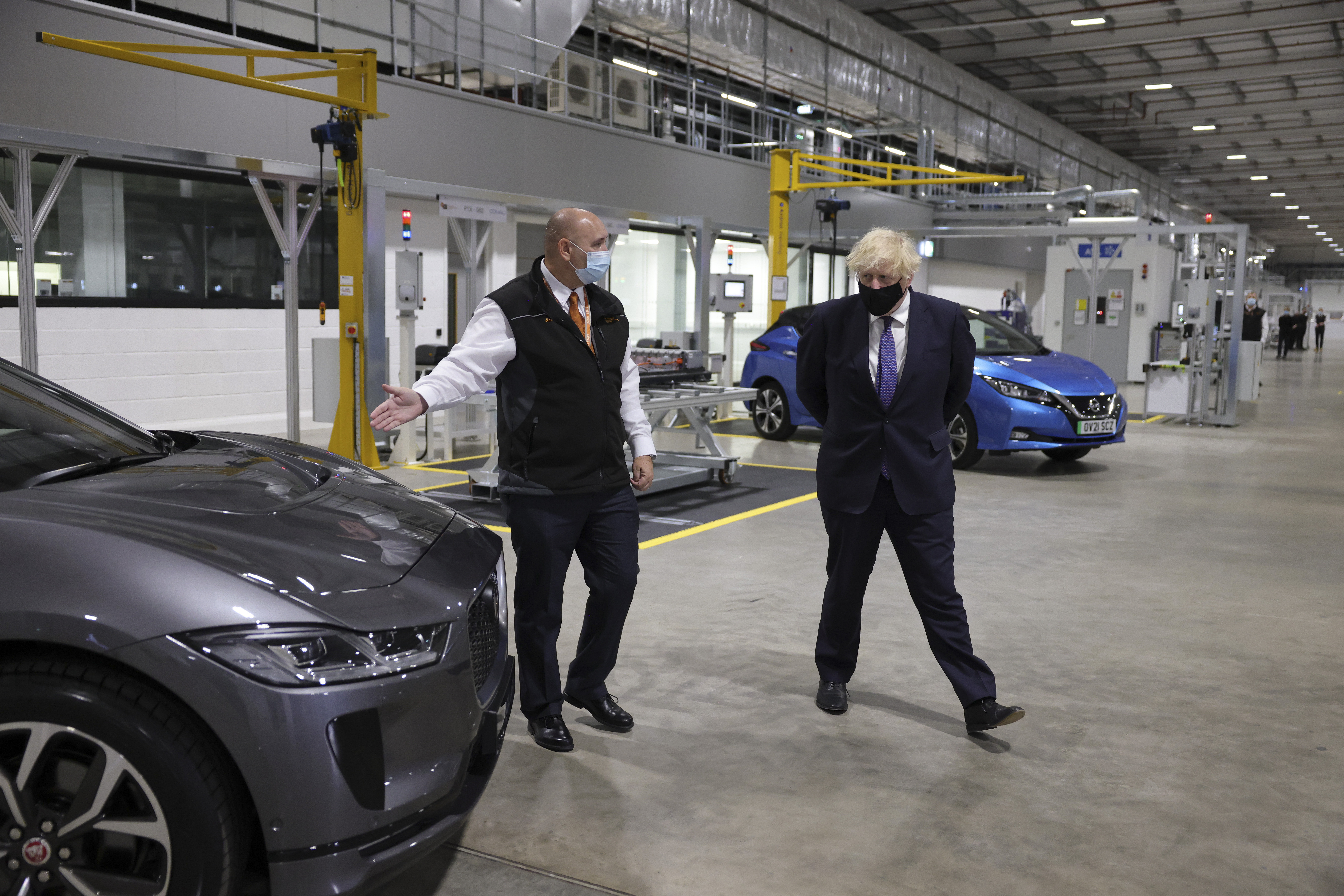
UKBIC can be used by any organisation working on batteries for electric vehicles, rail, aerospace, industrial and domestic equipment and static energy storage, who can benefit from finding out whether their advanced technologies can be scaled up successfully before committing to the huge investment required for mass production. The facility employs more than 80 battery technicians, engineers, and support staff, with plans for that number to grow to support future project partnerships with industry and research organisations.
UKBIC presents an opportunity for UK technology developers to prove out their innovations and processes by acting as the bridge between new battery chemistries developed in the research laboratories and mass scale production for the automotive market in Gigafactories. The facility is owned 66% by Coventry City Council and 33% by the University of Warwick in order to maintain its independence of any one vehicle or battery company.
David Greenwood, Professor of Advanced Propulsion Systems at WMG, University of Warwick comments:
“We are delighted to see UKBIC come to fruition. This national infrastructure exists nowhere else in Europe, and gives the UK a major advantage for development of new battery technologies. It is something that WMG identified back in 2016, and we were elated to win the bid in 2017, from a competition run by the Advanced Propulsion Centre (APC), to establish what is now UKBIC. We scoped the facility, built the team, and started the project based out of our Energy Innovation Centre. As intended, UKBIC became independent of WMG in 2018, and moved to site in 2020 as the building was completed.
WMG continues to work closely with UKBIC, with our focus on helping companies and universities prove out their battery chemistries and cell designs, ready for industrialisation which can take place at UKBIC. Together, we have built an ecosystem which allows battery companies to investigate new technologies, prove them out, and then industrialise for high volume manufacture.”
The UK Government has committed to net zero carbon emissions by 2050, and the Ten Point Plan for a Green Industrial Revolution makes the commitment that all new vehicles are to have a traction battery by 2030 (electric or plug-in hybrid) and be fully electric by 2035. WMG and UKBIC will support the development of battery technologies needed to deliver against that vision.
The Rt Hon Boris Johnson MP, Prime Minister, said: “UKBIC is a beacon of innovation and ingenuity- shining the way for a brighter, greener future for the battery sector in the UK. It was an honour to open this world-class facility which will help to deliver green growth and jobs as industrial demand accelerates in the UK battery sector. With the technology and government backed expertise on offer right here in Coventry, I have no doubt that UKBIC will become world leaders in the industry.”
Margot James, Executive Chair at WMG, University of Warwick adds:
“Battery production is critical to the future of the UK automotive sector, the electrification agenda, and achieving a sustainable future for industry. The West Midlands has long been the centre of the UK automotive industry, with an advanced supply chain, a mature automotive skills eco-system, and cutting-edge research. The UK Battery Industrialisation Centre is at the heart of the UK battery manufacturing landscape.”
“It’s no coincidence that UKBIC is immediately adjacent to the proposed site for the West Midlands Gigafactory. We foresee a strong interaction between those two, whereby the Gigafactory caters for the millions of batteries that go into cars right now, and UKBIC is the future-facing mechanism that helps the Gigafactory generate its next product and helps companies de-risk new battery manufacturing processes by facilitating manufacturing trials without the high risk of committing to a mass production run.”
UKBIC is a key part of the Faraday Battery Challenge (FBC), a Government programme to fast track the development of cost-effective, high-performance, durable, safe, low-weight and recyclable batteries.
Professor Greenwood continued;
“Although UKBIC has been set-up in such a way that it can support businesses across a plethora of industries and sectors, this initiative is led by current automotive demand as this is the biggest market and it is moving the fastest. However, at WMG over the last 12 months we have been increasing our work with aerospace, marine, rail, motorcycle and micro-mobility sectors, so we can see electrification applications growing across all of transport and mobility.
WMG’s role in the battery manufacturing journey is to progress the basic science of the material chemistry to proof of concept. This is the point where you can build small volumes of cells per day and demonstrate that they provide the lifespan and performance that you expect. Based on this, WMG’s work is very closely aligned with manufacturing processes, but not at full manufacturing rate.
“This then needs to go from a working product, to a product that will run down a manufacturing line at 20 cells per second, and this mass scale production is where we need to get. UKBIC is the solution to fulfilling this last segment of the process; the manufacturing scale-up.
UKBIC can develop three things; product, manufacturing technology and skills, with each one bringing different stakeholders. For car manufacturers, it provides the ability to build prototype volumes of cells, modules and packs to be able to build early fleets of vehicles before you go to full-scale production.
As the industry recovers from the Covid-19 pandemic, we need to create jobs and opportunities in new sectors rather than the old ones. We will be utilising UKBIC to up-skill, re-skill and train individuals in specialist battery manufacturing areas, which will be required to support the UK Government’s Build Back Better plan for growth. As an industry we will need 20,000 skilled staff for Gigafactories, and a further 50,000 in their supply chains. These jobs are likely to be focussed around the Midlands and the North East”
This is a positive step for the battery ecosystem, providing a pipeline of opportunities for various levels of engineers and technicians as well as young people looking to establish a career in battery technology or the automotive sector through apprenticeships. WMG, have seen this area of the market emerging for some time, and as a result have created a national skills framework, including apprenticeships, degree apprenticeships, short courses and formal qualifications. This aims to deliver the needs of a decarbonised automotive sector through electrification, building skills for the future and keeping the brightest talent in the region.
